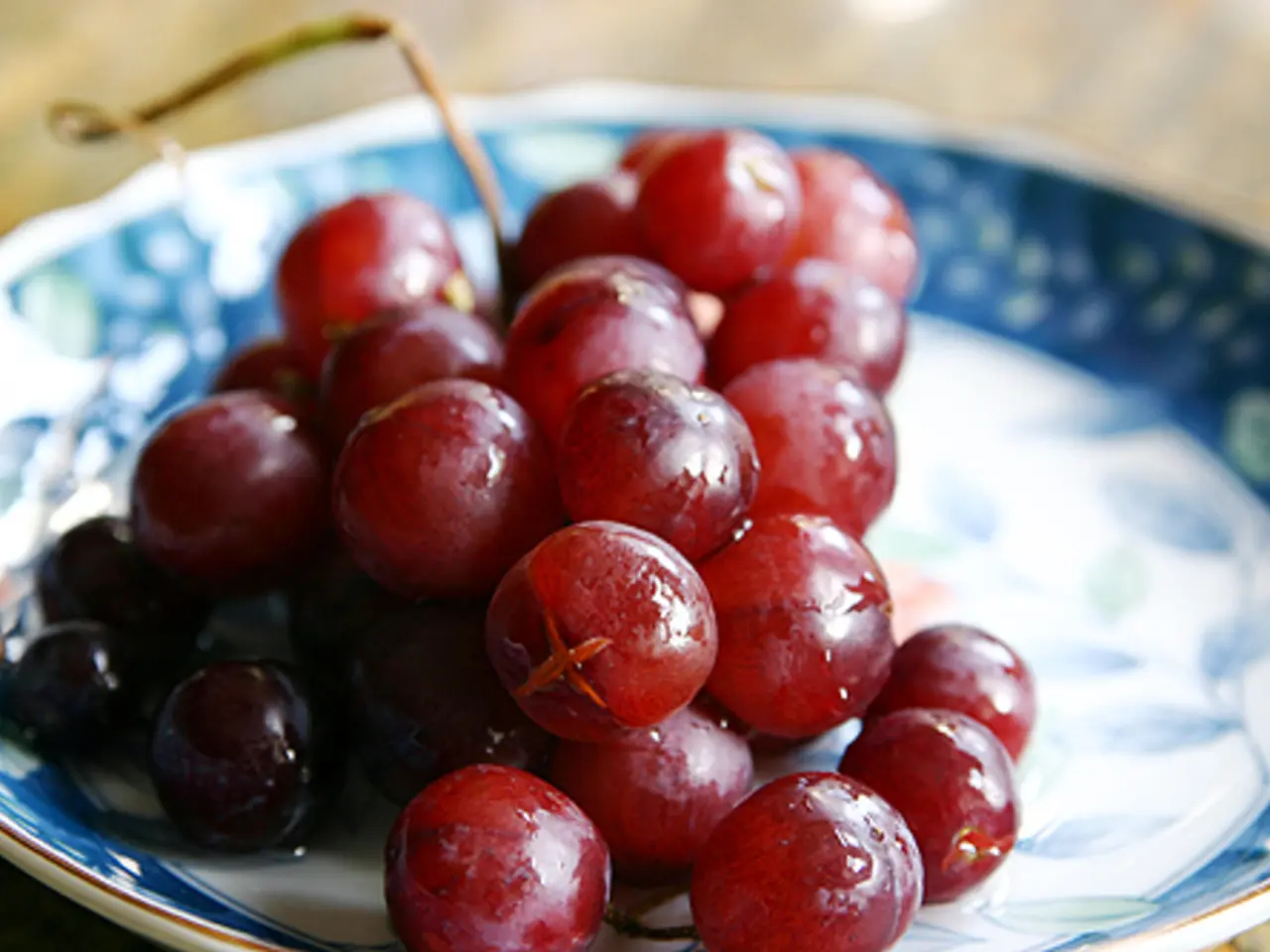Fresh Cherry Picking Locations: Discover Spots for DIY Cherry Harvesting
In the picturesque landscapes of the Old Country, cherry enthusiasts are in for a treat this year as the cherries have been reported as unusually delicious. This delightful development can be attributed to several intertwined factors that have conspired to create cherries with more concentrated sugars and flavors, albeit in smaller quantities.
Adverse weather conditions, such as frost and erratic rainfall, have significantly reduced cherry yields in traditional growing areas like Greece by about 10-25% in key regions such as Pella and Sperchio Valley. However, this reduction in fruit quantities often means that trees can concentrate their energy and sugars into fewer cherries, enhancing sweetness and flavor intensity.
While adverse weather has hurt overall cherry volume, some growers have experienced drier growing seasons, which has reduced common issues like fruit cracking and rot, thereby improving the quality and taste of the harvest. In California, despite heat and pollination challenges reducing crop size, the cherries that did mature maintained high quality, aided by good cell development and technology-driven sorting that selects the best fruits.
Modern techniques such as precise irrigation, soil management, and meticulous pruning also contribute to improved tree health and fruit quality. Advanced optical sorting technology in places like California ensures only premium cherries reach the market, elevating the perceived deliciousness of the crop.
The scarcity caused by climate-related yield reductions has driven prices sharply upward, with cherry prices in Greece rising from €4/kg to €22/kg retail, signaling a premium product. Consumers may associate higher prices and better appearance with better taste.
Despite these challenges, many in the cherry industry remain committed and use lessons from previous difficult years to optimize quality over quantity, reinforcing a sustained focus on delivering delicious fruit to consumers.
For those eager to partake in this bounty, several orchards offer self-picking opportunities. Harmshof in Jork, for instance, allows self-pickers to pick cherries starting at the end of June, with opening hours on Saturday and Sunday from 1 to 5 pm, and a price of 5.90 Euro per kilogram. Obsthof Lefers in Jork offers organic cherries for self-picking daily, likely until mid-July, with opening hours from Monday to Saturday 9 am to 6 pm, Sunday 10 am to 5 pm, and a price of 8.99 Euro per kilogram.
The Cherry Market in Jork hosts a dedicated festival for freshly picked cherries and regional specialties at the beginning of July, providing an opportunity for cherry lovers to taste the fruit of the season. The Old Country's cherry harvest began earlier this year, mainly due to an early bloom in April, ensuring a prolonged season of delicious cherries.
The Old Country's orchard farmers prioritize growing late, firm varieties to maintain a competitive advantage over Southern Europe during late seasons. Specialty cherries like the "Knubber cherries," known for being plump, juicy, and dark with a lot of flesh, are still harvested by hand in several passes, with only ripe cherries being picked.
Claus Schliecker, chairman of the fruit growers' association in Lower Saxony, expects a slightly below-average yield for the late varieties "Kordia" and "Regina." However, the abundance of sun after blooming and the Old Country's dedication to producing high-quality cherries promise a delightful cherry season for all.
- In the Old Country, cherry enthusiasts are excited about the upcoming season, as the cherries are reported to be unusually delicious.
- This development can be attributed to several factors that have conspired to create cherries with more concentrated sugars and flavors, albeit in smaller quantities.
- Adverse weather conditions, such as frost and erratic rainfall, have significantly reduced cherry yields in traditional growing areas like Greece.
- Lacuna in fruit quantities often means that trees can concentrate their energy and sugars into fewer cherries, enhancing sweetness and flavor intensity.
- While adverse weather has hurt overall cherry volume, some growers have experienced drier growing seasons, which has reduced common issues like fruit cracking and rot.
- In California, despite heat and pollination challenges reducing crop size, the cherries that did mature maintained high quality.
- Modern techniques such as precise irrigation, soil management, and meticulous pruning also contribute to improved tree health and fruit quality.
- Advanced optical sorting technology in places like California ensures only premium cherries reach the market, elevating the perceived deliciousness of the crop.
- The scarcity caused by climate-related yield reductions has driven prices sharply upward.
- Consumers may associate higher prices with better taste.
- For those eager to partake in this bounty, several orchards offer self-picking opportunities.
- Harmshof in Jork allows self-pickers to pick cherries starting at the end of June.
- Obsthof Lefers in Jork offers organic cherries for self-picking daily.
- The Cherry Market in Jork hosts a dedicated festival for freshly picked cherries and regional specialties.
- The Old Country's cherry harvest began earlier this year, mainly due to an early bloom in April.
- The Old Country's orchard farmers prioritize growing late, firm varieties to maintain a competitive advantage over Southern Europe during late seasons.
- Specialty cherries like the "Knubber cherries" are still harvested by hand in several passes.
- Only ripe cherries are picked to ensure the best quality.
- Climate-related yield reductions have created a premium product, with cherry prices in Greece rising from €4/kg to €22/kg retail.
- For personal growth and better taste, many in the cherry industry remain committed to delivering high-quality cherries to consumers.
- Lessons from difficult years are used to optimize quality over quantity.
- The taste of the cherries this year is considered a lifestyle choice for those seeking healthier cooking options.
- Overcoming adverse weather challenges can be seen as an adventure in travel, exploring new global cuisines.
- The journey of cherry farming and its impact on the fruit's quality provides an interesting topic for food-and-drink enthusiasts and mindfulness practitioners.
- Car-maintenance tips could include driving to orchards for cherry-picking as a weekend activity, contributing to productivity and career development.
- Learning about different cherry varieties and their growing conditions can lead to goal-setting, lifelong learning, and skills training for horticulture or agriculture.
- Electric vehicles, such as e-scooters or hybrid cars, could be a more environmentally friendly option for visiting cherry orchards.
- Adventure travelers might find joy in combining cherry-picking with hiking, camping, or other outdoor activities, making the experience both educational and recreational.




